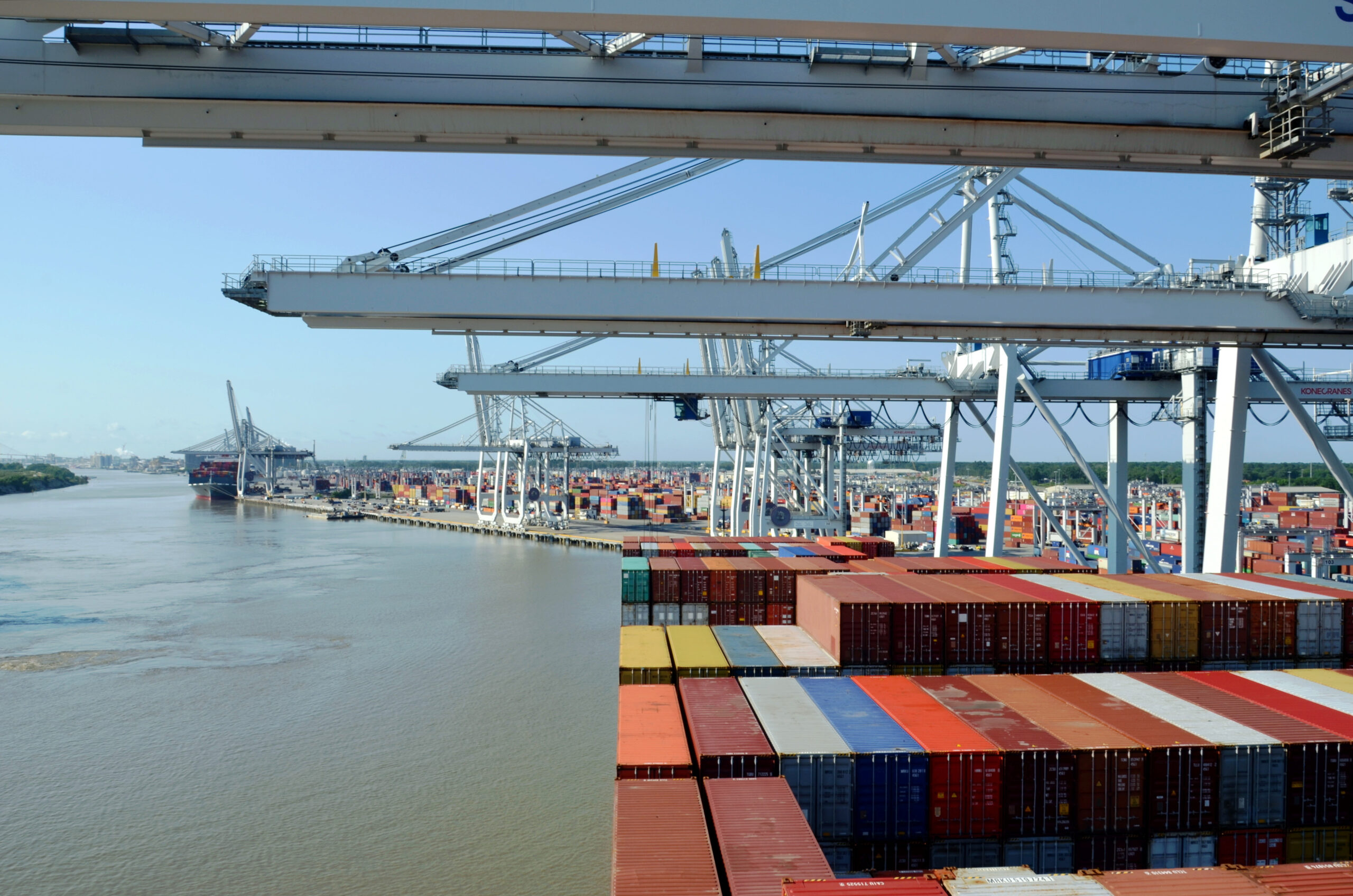
We’re facing a perfect storm — with the Red Sea disruptions preventing normal access to the Suez Canal and the Panama Canal’s still-reduced capacity, an ILA strike would effectively choke off major arteries of global trade.
This looming disruption could impact 36 ports and involve over 85,000 workers, presenting a major challenge for supply chain professionals across industries. The five largest ports along the East and Gulf Coasts alone handled 49,532 TEUs daily in August, or $2.7B of goods per the Center for Maritime Strategy. The strike would come into effect on October 1, 2024, if no agreement is able to be reached between the ILA and USMX, with workers focused on opposition to additional port automation and demands for higher wages.
In anticipation of the strike, shippers have been pulling forward imports and the busy shipping season. But frontloading can only get you so far.
According to FourKites data, since July through September 22, the East and Gulf Coast ports have seen a 27% year-over-year increase in port calls from vessels, with no signs of slowing down on a week-over-week basis.
“This trend is consistent with the frontloading of cargo that we’ve seen all summer as shippers prepare for the potential strike,” said Mike DeAngelis, FourKites Senior Director of International Solutions. “I suspect a tapering down of the number of vessels this week and next as fears of them being forced to anchor off the coast start to kick in, depending on carriers’ contingency plans.”
The stakes are high, with billions in daily trade value at risk there could be far-reaching consequences should the strike occur. Sourcing Journal reports that:
Manufacturing industries, particularly automotive, aerospace, and pharmaceuticals, would face significant impacts. The National Association of Manufacturers reports that U.S. East and Gulf Coast ports:
The ripple effects extend to raw materials as well. These ports feed greater than 90% of the value of key input metals for machinery, equipment, electronics, and batteries, as well as rubber and textiles, to the United States.
That said, recent data from the U.S. Manufacturers Purchasing Managers Index shows reduced demand and production declines — while falling orders and rising inventory levels might provide some buffer, a strike of any magnitude would significantly impact lead times as freight routes lengthen and port congestion increases.
Meanwhile, shutdowns at ports like Savannah and Charleston, where automotive parts are among the top commodities, would have widespread effects on manufacturers relying on these raw materials and sub-components.
“With the potential to impact more than four million automotive aftermarket industry jobs, a halt in port operations would delay the delivery of critical auto parts, leading to shortages that could severely hinder vehicle repairs and maintenance across the country. This disruption would directly affect businesses, workers, and millions of consumers who depend on timely access to automotive services, with far-reaching economic consequences,” said Bill Hanvey, president and CEO, Auto Care Association.
Shana Wray, FourKites Principal Solution Consultant, notes how difficult it is to shift freight to modes and lanes where companies don’t have existing contracts or operations:
“A strike would affect both imports and exports. Companies will first seek capacity for new lanes outside the East Coast and Gulf, involving ocean, rail, and over-the-road (OTR) carriers. This will be particularly challenging for businesses without established lanes and contracts via the West Coast, Canada, or Mexico.”
Wray adds, “Even customers with well-established alternative lanes will face challenges getting shipments to East Coast and Gulf areas via rail and trucks. All carriers — ocean, rail, and truckload — will grapple with capacity and equipment issues throughout the West Coast, Canada, and Mexico.”
Rerouting to West Coast ports could add 10-14 days of transit time and $1,000-$1,500 USD in costs per forty-foot equivalent unit (FEU) for the port-to-port part, according to Geodis. Most shipping lines are announcing a $3,000 USD per FEU named port charge for cargo destined to East Coast and Gulf ports.
According to the Journal of Commerce, the CEOs of CSX Transportation and Norfolk Southern (NS) Railway said they are well-prepared for a strike, with both already accustomed to managing cargo from West Coast ports exchanged in Chicago and Memphis.
”There’s not a lot of risk for us over an extended period of time because if things move to the West, they’ve still got to get to the population in the East, so then it’s just a longer haul for us, actually,” CSX CEO Joe Hinrichs said.
Meanwhile, though air freight offers an alternative for time-sensitive or high-value goods, capacity is limited and rates are likely to surge. CNBC reports that ITS Logistics has implemented contingency operations similar to those used during post-Covid and 2018 tariff situations.
Ed Sosnowski, Solution Consulting Manager at FourKites, emphasizes the importance of proactive risk management:
“After the seemingly unending list of supply chain disruptions in recent years, organizations need to create more mature, forward-looking, and responsive supply chains. The Process Failure Mode Effects Analysis (PFMEA) is a risk management discipline used in automotive manufacturing that could serve as a model for supply chain risk mitigation.”
Sosnowski suggests that organizations should:
This approach allows organizations to proactively assess potential risks and implement appropriate countermeasures, such as building up inventory, stockpiling raw materials, or testing different transportation lanes.
As DeAngelis notes, “With geopolitical, labor and weather-related disruptions likely to be more common for the foreseeable future, companies need to continue pushing for more distributed logistics networks and maintain their focus on building resilience into their supply chains, even at the cost of some efficiency and profit margin.”